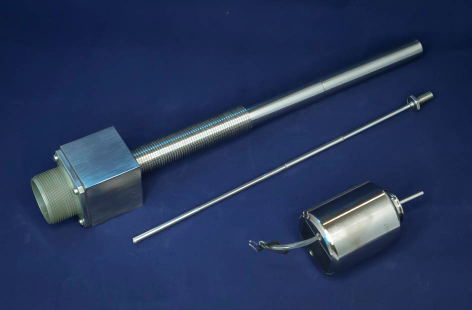How Our Subsea LVDTs Help The Oil and Gas Industry
Subsea LVDT sensors provide reliable and accurate information in extreme, harsh environments, providing many industries with the information they need to function safely and efficiently. The sensors are key to interpreting and providing data in dynamic environments. LVDT (Linear Variable Differential Transducers) are essential to various industries, including oil, gas, and nuclear. The subsea LVDT provides absolute, linear position measurement, while an RVDT provides high precision rotary or angular position measurements.
Accurate information is needed in oil and gas to catch errors that could cost millions or create a safety or environmental disaster. LVDT function, operating under very challenging environmental conditions, are an essential component of any oil and gas operation. This is particularly true in places where humans cannot go and see, such as in the deep sea or thousands of feet underground.

Extreme Environments
A subsea LVDT sensor can operate in extreme, high-pressure undersea environments. Submersible LVDT position sensors can withstand thousands of pounds per square inch of pressure and operate for decades, providing the information operators need to do their jobs. Oil and gas transducers play a key role in the extraction of energy - gas and oil - in subsea environments.
Temperature is another factor in gathering information in the oil and gas industry. Underwater oil and gas operations can experience extreme temperatures. The same goes for underground or even above-ground operations in desert areas. High temperatures or extremely cold create risks for sensors and information-gathering equipment. Sentech LVDT sensors are specifically designed to survive extreme environments while continuing to function for many years.
Specific Applications in Oil and Gas
Subsea LVDT sensors have many applications for the oil and gas industries, including providing blow out prevention on oil wells, pipeline monitoring, and providing proper drill direction. Subsea LVDT sensors can also be designed for specific needs and applications. The durability of the LVDT allows for use in the most extreme environments while delivering the essential applications listed above. The pressure resistance of the LVDT sensors means they are great for subsea exploration and extraction of oil and gas. Or for downhole applications in land-based oil and gas operations.
LVDT technology can provide the essential information related to velocity, potential displacement, and positioning in oil and gas operations. If the reading is given outside the established range of proper operations, the sensor understands that something has gone wrong on the hydraulics side and that is conveyed and a correction or shutdown, if needed, can commence. This is a crucial role that sensors in the oil an gas market play.
Differences between a LVDT and a RVDT

LVDTs are used to measure linear motion which is then converted to an electrical signal whereas RVDTs are used to calculate the angular displacement. Both of these are two different sensors used in different applications, so you cannot interchange a LVDT with a RVDT and vice versa. Although angular motion can be translated to linear motion it requires additional mechanical complexity and would negate the cost advantage of using LVDTs.
Key Takeaways:
- Subsea LVDT sensors work in extreme environments, making them perfect for oil and gas exploration or extraction efforts.
- Subsea LVDT can withstand thousands of pounds per square inch, which makes them applicable to undersea and downhole operations and applications.
- The durability and long term reliability of Sentech LVDT sensors mean they last for years while withstanding extreme temperatures.
- LVDT position sensors can be designed to meet the specific needs of an operation and customization is available.
Contact Sentech Today!
Contact Sentech for more information about subsea LVDT position sensors or if you have any questions about how Sentech can help meet your needs in the oil and gas industry.


